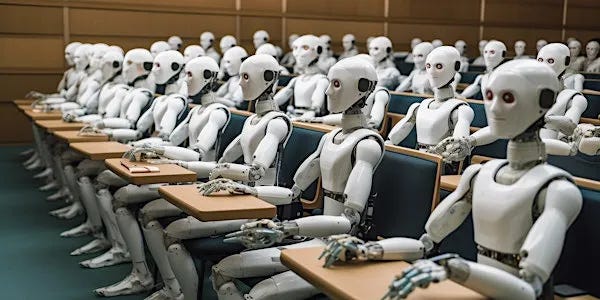[Video] AI in the Classroom
3 eras of AI, anticipating its risks, and creating educational policy
John Dyer is helping lead the way in how seminaries and universities are thinking about AI in education. In this video, he explores how AI is being used in education and what some of its potential impacts might be.
Dyer starts with an overview of the 3 phases of AI's 70-year history . . .
Programmatic AI
Discriminative AI
Generative AI
He follows it with rec…




